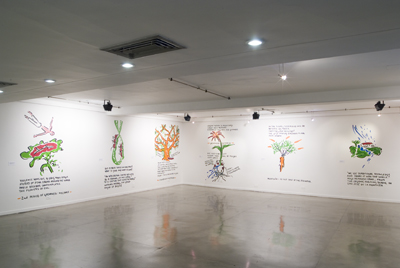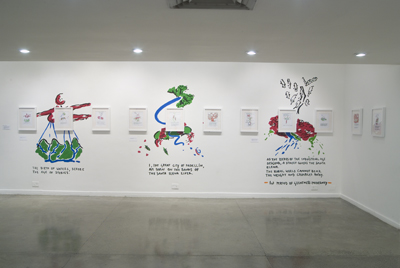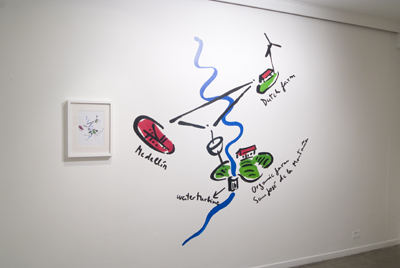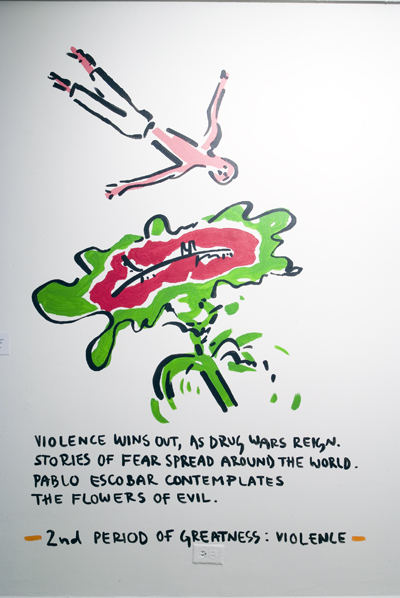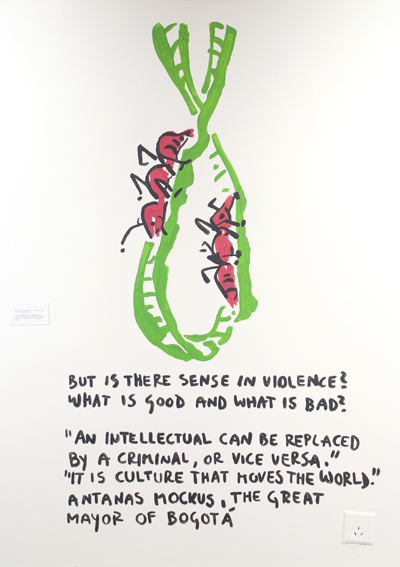Marjetica Potr?
Slovenia
|
|
Marjetica Potrcis an artist and architect based in Ljubljana, Slovenia.
Her work has been exhibited extensively throughout Europe and the Americas, including at the Sao Paolo Biennial (1996 and 2006) and the Venice Biennial (2003). She has had solo exhibitions at the Guggenheim Museum (New York, 2001), the Max Protetch Gallery (New York, 2002 and 2005), the Nordenhake Gallery (Berlin, 2003), the PBICA (Lake Worth, Florida, 2003), the List Visual Arts Center at the Massachusetts Institute of Technology (2004), and the De Appel Foundation for Contemporary Art (Amsterdam, 2004), among other places. Her many on-site installations include Dry Toilet (Caracas, 2003), Balcony with Wind Turbine (the Liverpool Biennial, 2004) and Genesis (2005), which is on permanent display at the Nobel Peace Center in Oslo.
She has also published a number of essays on contemporary urban architecture. In 2005, she was a visiting professor at the Center for Advanced Visual Studies at the Massachusetts Institute of Technology. She has been the recipient of numerous grants and awards, most notably the Hugo Boss Prize (2000).
‘The Great City of Medellín: Period of Education’
A small-scale water turbine is installed on a creek above Medellín, in the border area between the urban and the rural, which local people call the "frontier." A community group – most likely, a school – will be able to use the energy produced by the turbine as they see fit. The project calls attention to rivers and the negotiation of water.
Medellín / Ljubljana, March 2007
The rivers that spring from the hills surrounding Medellín create corridors of nature that bring a rural element to the city. In Medellín, people refer to the border between the expanding city and the receding farmlands as “the frontier,” and for me, the communities here are especially interesting. For the balance between the urban and rural will define the 21st century. Perhaps the frontier experience of Medellín can provide us with a laboratory, a test case for the big picture, for the world as a whole.
As of 2006, more than half the world’s population lives in cities. Paradoxically, as cities become weighted down by the very civilization they have created, rural and forested areas are coming up with ideas for a sustainable future that are, in many ways, better than what we see happening in cities. But small-scale sustainable rural communities still need help from the cities. At the same time, a new form of territorialization is called for. It seems likely that the 19th-century form of organizing space into national states and the 20th-century form of organizing it into centers and peripheries will both give way to a territorial organization based on natural resources such as water. Will small-scale farmers one day erode the power of states and cities?
Real benefits come from radical thinking. While the Medellín "frontier" is the obvious site of negotiation between the rural and the urban, it does not stop there, but reaches into the deep tissue of the city, as witnessed in the current attempt to integrate the informal city – the barrios, whose architecture draws directly on the rural experience.
Medellín understands that the rural can be its partner, and not only the victim of its relentless expansion. It needs the rural to curb and redirect the urban sprawl. As Carlos Mario Gil, a ranger who accompanied Toto and me as we walked on Santa Elena Mountain above the city, put it, "Only the farms can stop the city’s growth!" The idea of our walk was not only to view the city from above, but also to see it from the perspective of the mountain, of nature.
The tool most needed for social change is education. In the not-too-distant future, the farms on Medellín’s frontier will not only produce food; they will become teaching centers, where urbanites learn farming. But sustainable development also calls for organic farming, and this demands a cultural change. José Fernando Jiménez took us to a school for organic farming in rural San José de la Montaña above the city – a successful initiative that brings together local farmers and the environmental group Penca de Sábila. Another successful initiative, in Santo Domingo barrio, can be seen in the urban agriculture practiced by a network of families who cultivate vegetable gardens on their rooftops and in their backyards.
Lastly, the rivers, which gave birth to the city, must be protected, for they themselves protect the quality of life. The Important Hills project, organized by the Mayor’s Office, is clearing the riverbanks so residents can get greater enjoyment from the rivers. This is quite a contrast to the period of modernity, which valued industrial riches over nature: during the 1940s, for example, the Santa Elena River was covered by a street.
Peaceful coexistence and education go hand in hand, and both have become obsessions in Medellín. The astounding number of schools and
MARJETICA POTR?
Serie basada en 12 dibujos originales hechos en:
Cortesy of artist and Galería Nordenhake, Berlín. |

